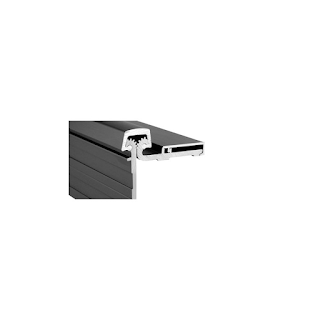What Are The 2 Common Types Of Continuous Hinges?
Continuous hinges have been exclusively developed to match the full
height of any door. They have the power to carry heavy doors, and due to
their durability, they have a greater life span than standard butt
hinges. The continuous hinges run along with the full length of a door.
So the total weight of the door is evenly distributed along with the
length of the mainframe. It reduces the excess pressure on the hinge.
Continuous hinges offer smooth operation in high traffic, high
operational, and busy areas. They are mostly used on entry doors of busy
shopping malls and stores. Surface continuous hinges are also used to hold oversized doors, larger and wider than the usual doors.
- They produce less noise than a regular or traditional hinge
- You can install a continuous hinge on any existing door. Therefore, it is a cost-friendly and easy solution.
- Compared to the traditional butt hinges, the surface continuous hinge is far more durable and has a longer life span.
- The hinges have been exclusively designed so that each leaf operates
similarly to the other one. As a result, it reduces the effort to open
and shut even the heaviest commercial doors.
- The hinges offer a higher degree of security in secure and restricted areas.
- A continuous hinge is often used in examination halls, lavatories,
executive offices, and file rooms where you must block the gap between
the door and the jamb.
- Pemko Half Surface Continuous Hinge
Features of this surface continuous hinge:
- Heavy-duty construction: for each leaf, you get 20 fasteners
- Wooden screws are also available.
- Heavy-duty hinge: 3 inches between bearing centers.
- Special hinge reinforcement is not required during the time of installation.
- Made from aluminum and therefore can be used on swinging type fire
doors made of hollow metal, sheet metal, steel-clad, and steel covered
composite material.
- Heavy-duty anodized aluminum is used for construction.
- The surface continuous hinge has been designed exclusively for
retrofit work, which you can also apply on the exposed surface of the
door or frame.
- Pemko Full Mortise Continuous Hinge- Kawneer
Features of this hinge:
- Half pound or less operating force is required to operate the doors
equipped with a Pemko Full Mortise Continuous Hinge- Kawneer.
- The low operating force feature makes this continuous hinge ideal for the doors that physically challenged people use.
- The hinge has been designed for modern doors.
- It can be applied to conceal both leaves.
- The hinge is fire rated- UL10C- positive pressure
As they can provide a precise alignment, mortise continuous hinges have a lot of commercial applications. Due to their smooth pivotal action and smooth action rotation, it is a cost-friendly alternative to the traditional hinges. The ease of customization also makes it an ideal choice for commercial applications.
For more information, visit https://www.parkavenuelocks.com/




Comments
Post a Comment